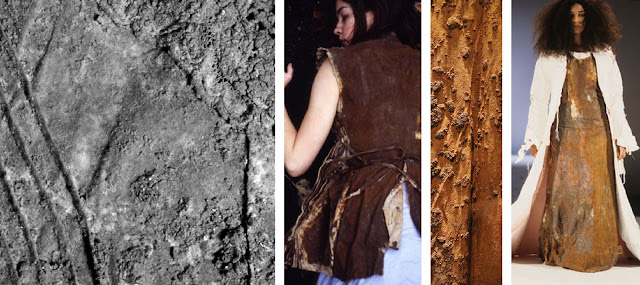"The Grotesque is the estranged world. But ...it is our world which has to be transformed. Suddenness and surprise are essential elements of the grotesque. Its representations in the plastic arts... do not refer to a state of repose but to an action, a "pregnant moment", or at least — in the case of Kafka — a situation that is filled with ominous tension...
We are strongly affected and terrified because it is our world which ceases to be reliable, and we feel that we would be unable to live in this changed world. The grotesque instills fear of life rather than death. The various forms of the grotesque are the most obvious and pronounced contradictions of any kind of rationalism and any systematic use of thought."
- Wolfgang Kayser, The Grotesque in Art and Literature, 185
"The most consistently distinguished characteristic of the grotesque has been the... mixture of the heterogeneous, or conflation of disparates."
- Philip Thomson, The Grotesque, 11
With its insistence on ironic reversals, on fluent and fertile opposites, the grotesque also resembles the topos of The World Upside-Down, that topsy-turvy universe where things are no longer in their place, where order is disrupted, where hierarchies tumble, and the Fool is king. Both the Grotesque and The World Upside-Down possess a darkly comic portent, that the fantastic uncovers and explores; both serve the key function of revealing the constructed nature of rationality, of the mandate that everything be in its place. The surface relationships by which daily life is governed are anything but ordained and stable; indeed, they can be understood as absolute only by dint of a sustained illusion.















